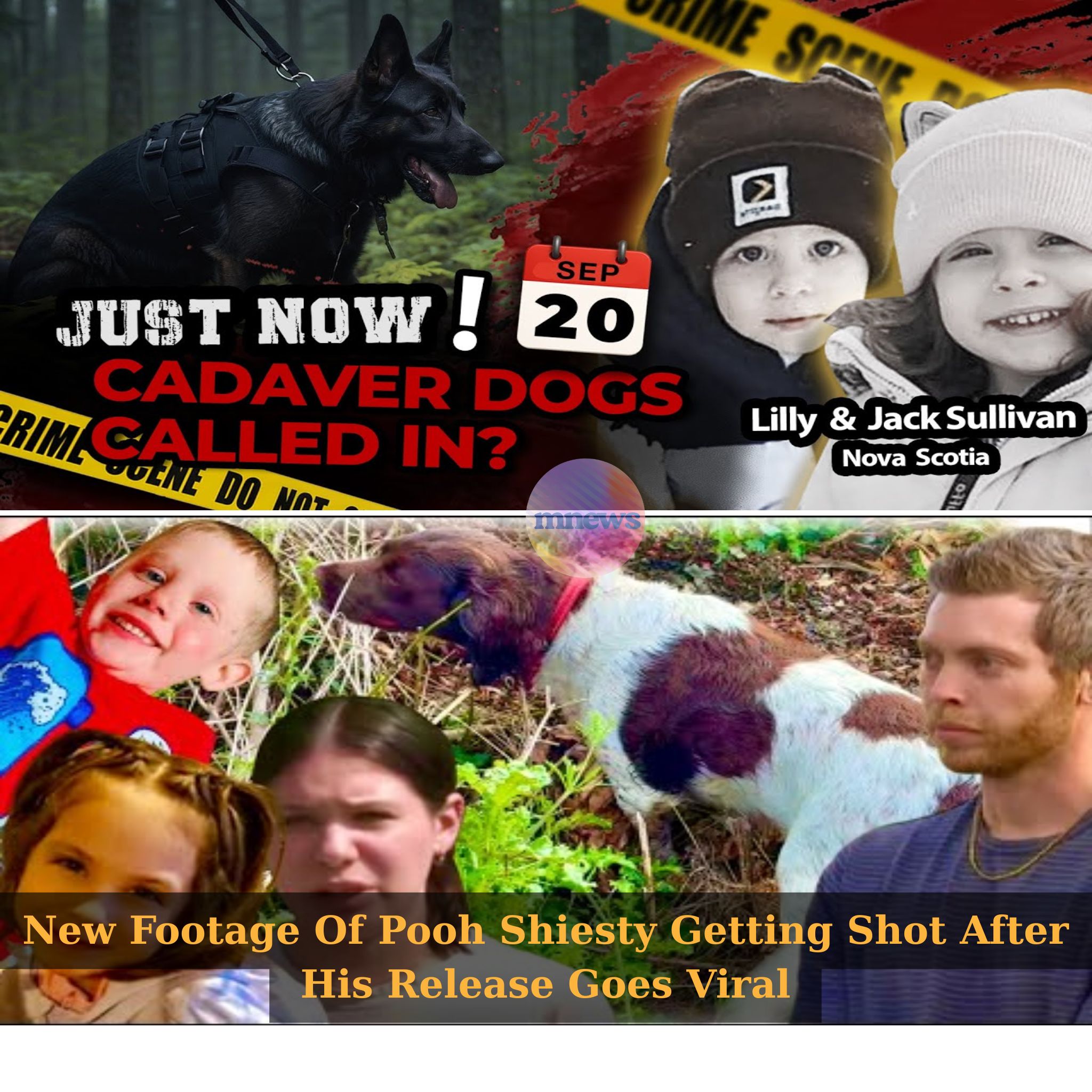RCMP Deploy Cadaver Dogs in Search for Missing Siblings: A Chilling Shift in the Investigation
 In a haunting development that has sent shockwaves through Nova Scotia, the Royal Canadian Mounted Police (RCMP) have confirmed the deployment of specialized cadaver dogs in the search for 6-year-old Lily Sullivan and her 4-year-old brother Jack, who vanished from their home in Lansdown Station over four months ago. This decision marks a significant and unsettling shift in the investigation, raising urgent questions about the fate of the missing siblings.
In a haunting development that has sent shockwaves through Nova Scotia, the Royal Canadian Mounted Police (RCMP) have confirmed the deployment of specialized cadaver dogs in the search for 6-year-old Lily Sullivan and her 4-year-old brother Jack, who vanished from their home in Lansdown Station over four months ago. This decision marks a significant and unsettling shift in the investigation, raising urgent questions about the fate of the missing siblings.
The announcement comes after months of exhaustive searches, community efforts, and the review of thousands of tips and videos, all of which have yielded no answers. The use of cadaver dogs—trained exclusively to detect the scent of human remains—signals a grim possibility that the investigation may now be focused on recovery rather than rescue. Staff Sergeant Steven Pike, who oversees the RCMP’s Police Dog Services Training Center, emphasized the dogs’ unique capabilities, noting their ability to locate remains in challenging environments, from dense forests to underwater sites.
Grandmother Belinda Gray expressed a mix of relief and frustration upon hearing the news. “I wanted to jump up and down at the news,” she said, acknowledging that her long-standing calls for the deployment of these dogs had finally been answered. Yet, she couldn’t help but question the delay: “Why only now? Why did it take so long?” Her words echo the sentiments of a community that has been left grappling with unanswered questions and the painful silence of the children’s parents.
Despite the RCMP’s insistence that there is no definitive evidence suggesting the children are deceased, the very act of bringing in cadaver dogs speaks volumes. These dogs are not deployed lightly; their presence indicates a serious shift in the investigation’s tone and raises the specter of tragedy. The RCMP has faced mounting criticism over the decision to wait so long to utilize this critical resource, with many wondering if the delay reflects a reluctance to confront the harsh realities of the situation.
As the community watches and waits, the silence surrounding the children’s mother, Malayia Brooks Murray, and stepfather, Daniel Martell, has only fueled speculation. Their absence from public discourse contrasts sharply with Gray’s vocal advocacy, leaving many to ponder the reasons behind their quietude. In a case that typically sees parents pleading for information, their lack of visible emotion has created a vacuum filled with suspicion.
The introduction of cadaver dogs alters the narrative from one of hope to one of dread. Theories about the children’s disappearance now take on a darker tone, with possibilities ranging from tragic accidents to potential foul play. The RCMP has not disclosed where the dogs will search, but the dense woods surrounding Gearlock Road, where the children were last seen, is a likely focus. The community holds its breath, fearing that the dogs may uncover the heartbreaking truth that many dread.
As the search efforts intensify, the emotional weight of the situation becomes increasingly palpable. Each day that passes without answers deepens the wounds of uncertainty for the Sullivan family and the community at large. The deployment of cadaver dogs is not just an investigative move; it is a turning point, an acknowledgment that the search for Lily and Jack may be more complex and tragic than anyone had hoped.
In this critical moment, the RCMP’s actions speak louder than words. The arrival of the cadaver dogs brings with it an unsettling realization: the possibility that the search may not be for life, but for closure. As the community grapples with this chilling reality, the haunting questions remain—what will the dogs uncover in the woods of Nova Scotia, and will their findings finally bring answers to a heart-wrenching mystery that has captivated and horrified a nation?




